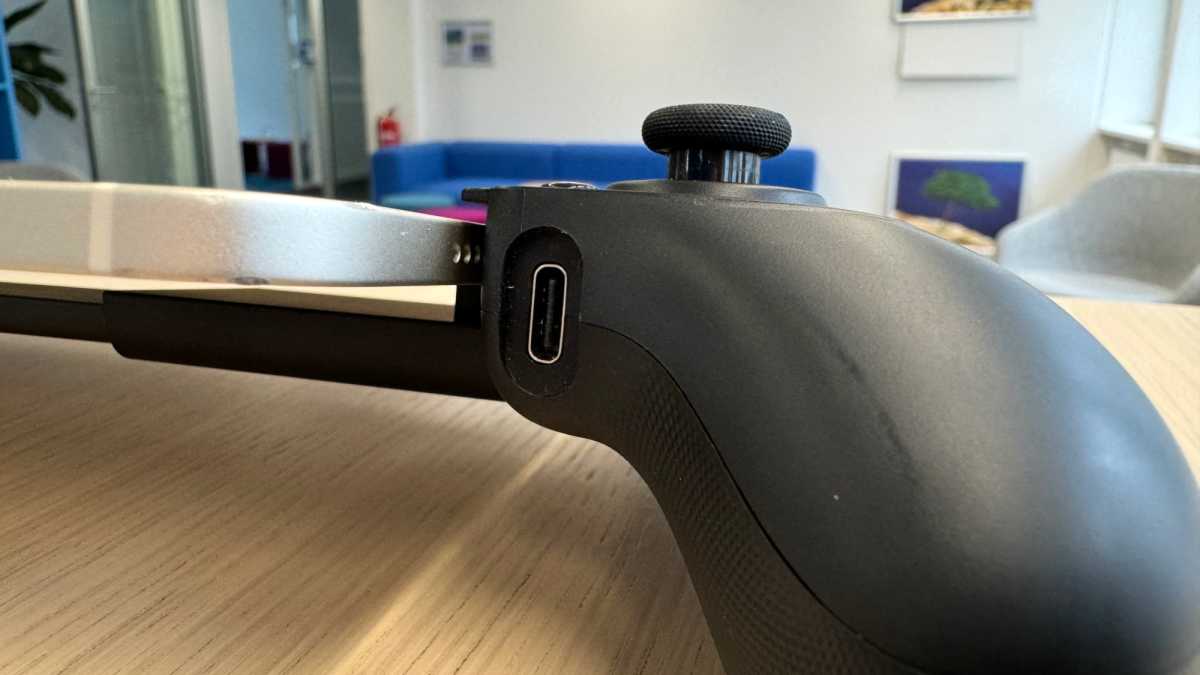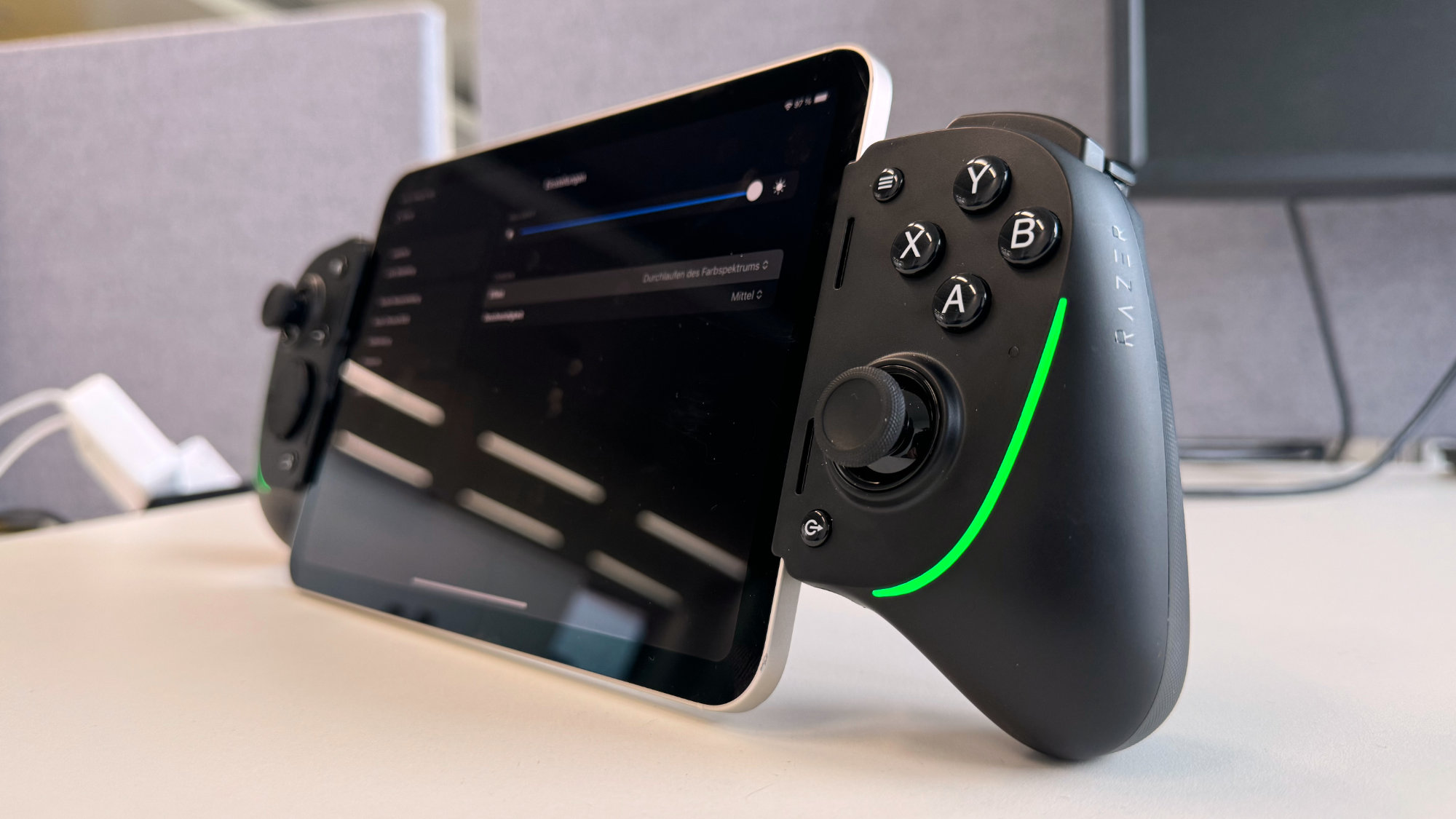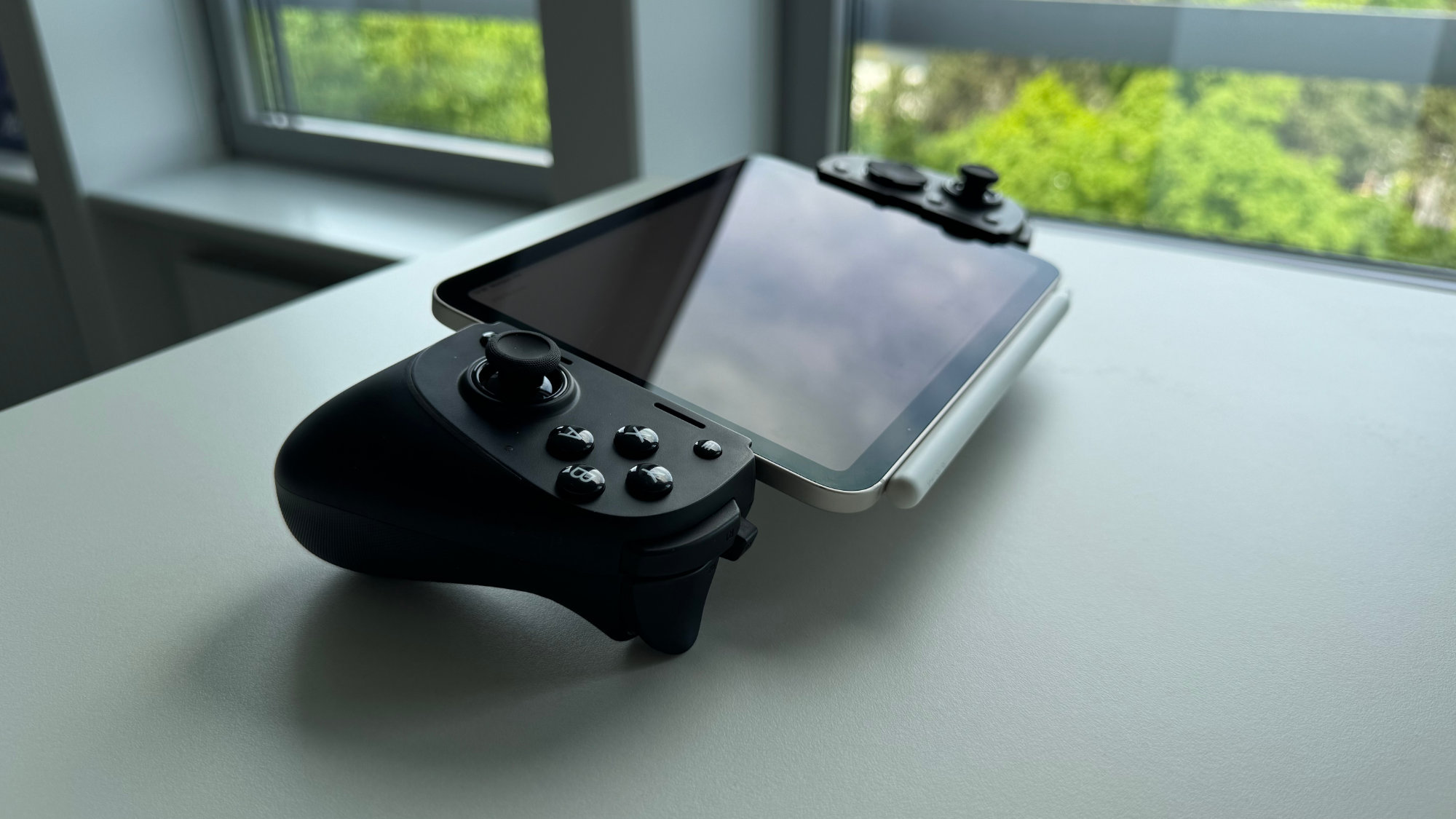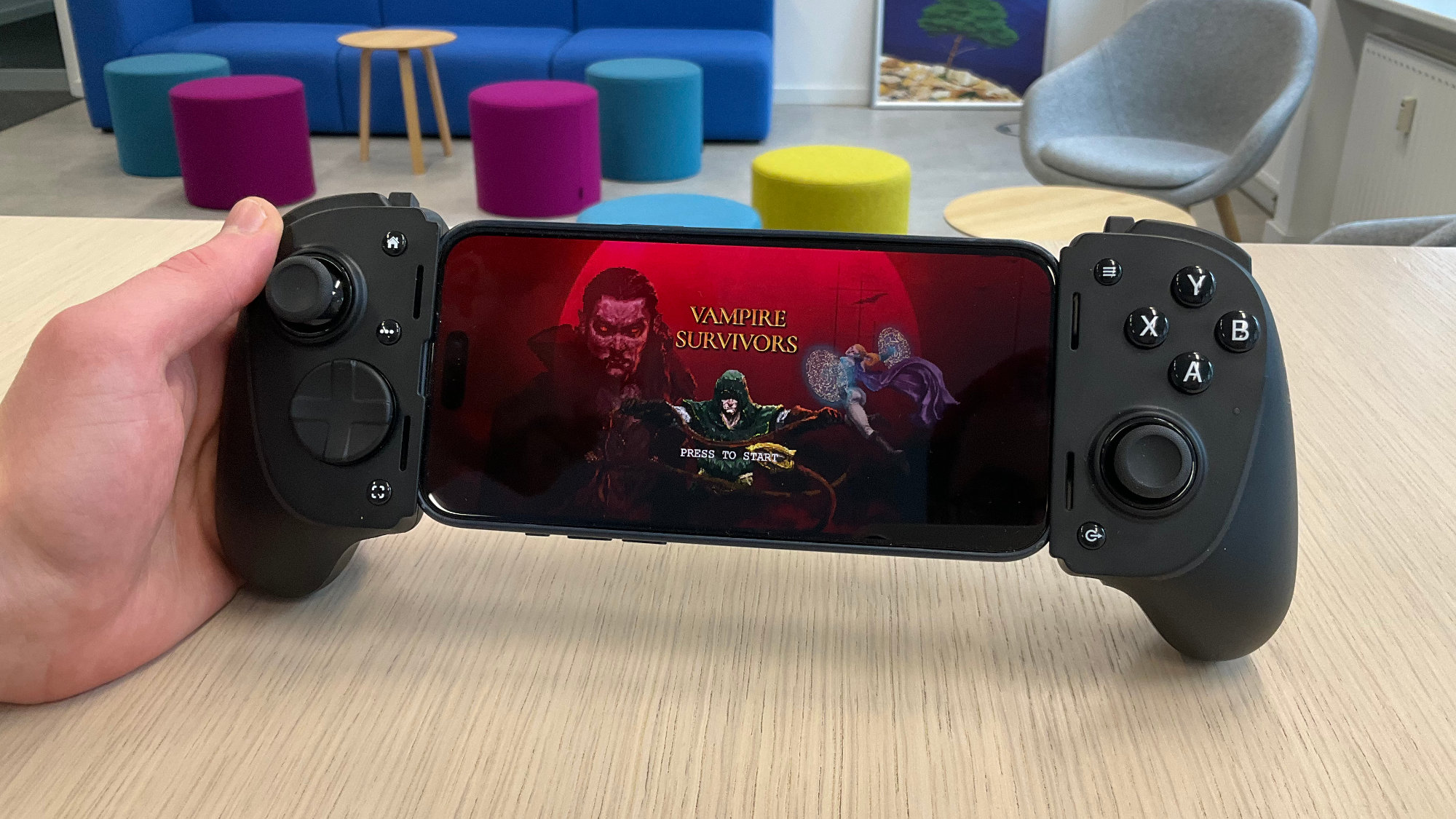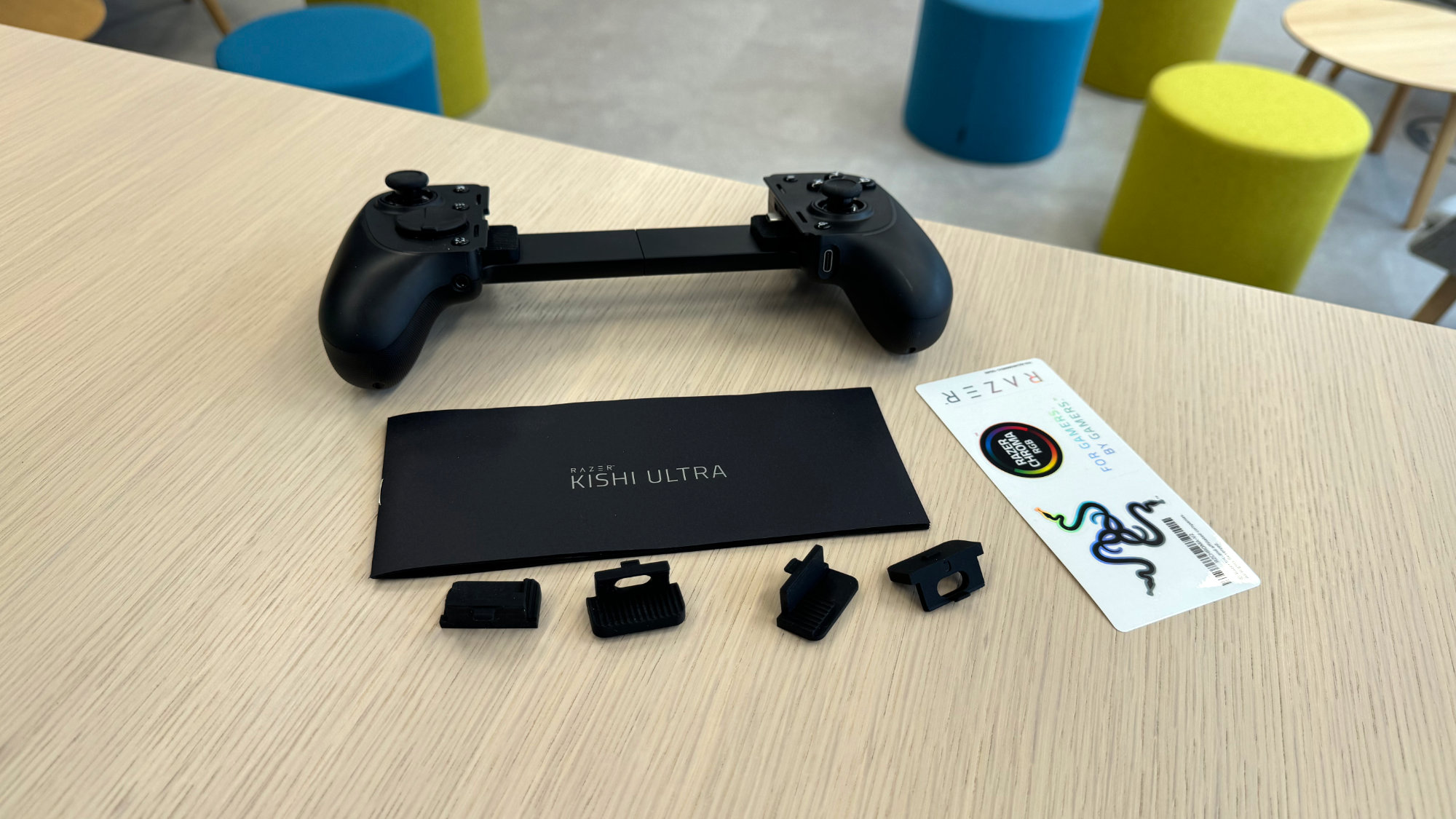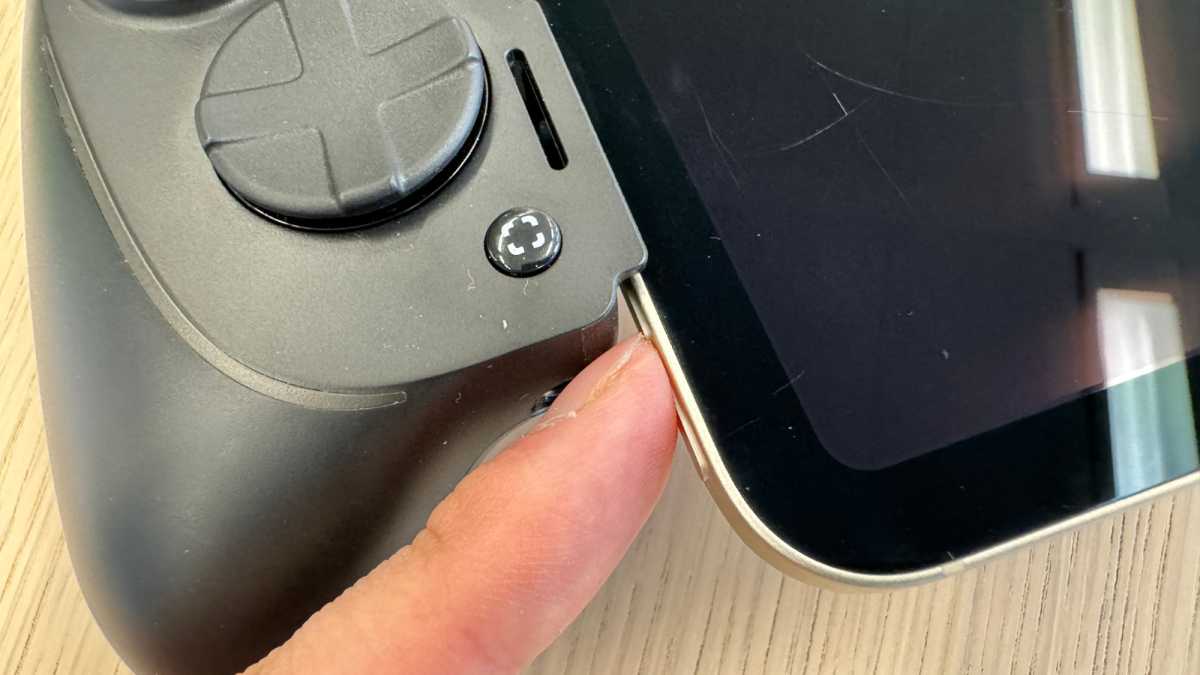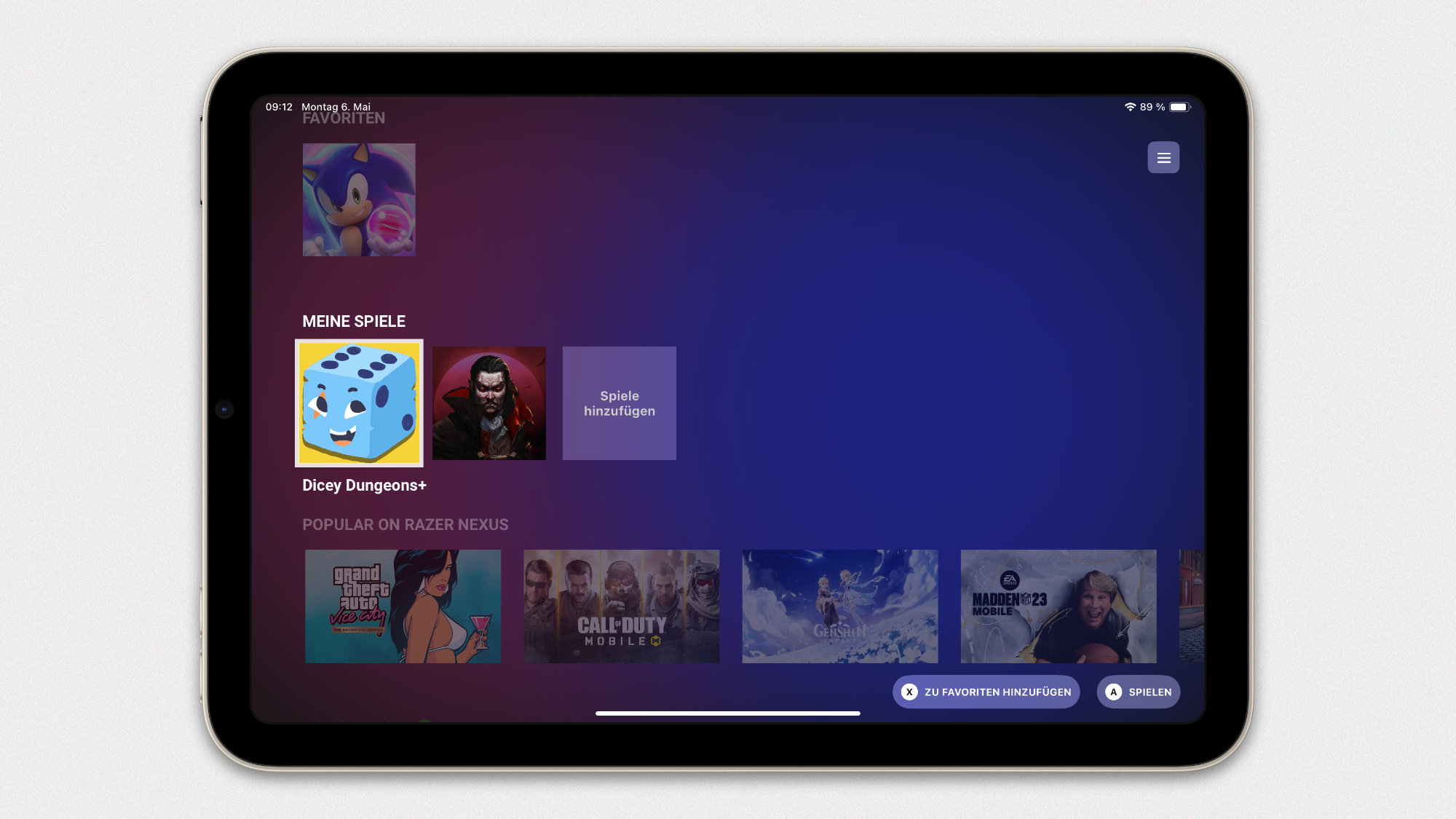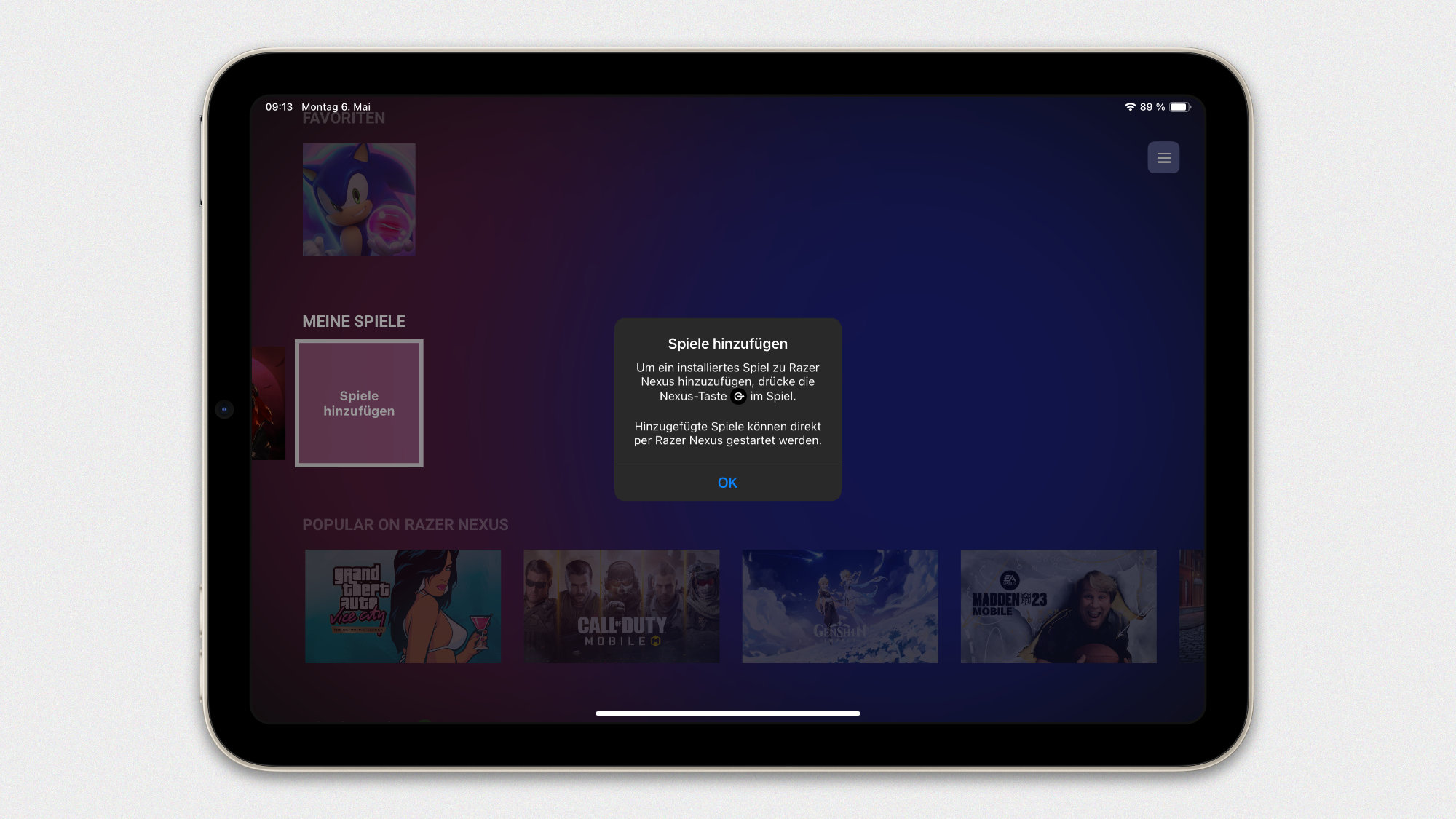Expert’s Rating
Pros
- Large enough for iPad mini (6th gen)
- Sits comfortably in the hand
- Pass-through charging and audio
- Subtle RGB lighting
Cons
- Not compatible with iPhone 14 and older
- Loud buttons
Our Verdict
The Razer Kishi Ultra is a great purchase if you have a 6th-gen iPad mini (the one with the USB-C port) and want to turn it into a gaming device with the best screen in its class.
Price When Reviewed
$149.99
Best Prices Today: Razer Kishi Ultra
$149.99
As someone who has used the Razer Kishi V2 for iPhone, I’ve noticed that an iPad mini with a Lightning port was unfortunately too big for it. I thought that this was quite a shame because a larger screen would make the experience with the Kishi controller so much better.
A year later, Razer launched its successor: the Razer Kishi Ultra, which is big enough for the 6th-gen iPad mini. It made me realize how much of a problem iPad mini gaming can be and what a brilliant upgrade the Kishi Ultra’s compatibility with the iPad mini alone represents.
Apart from that, Razer successfully addresses a few other issues I found with the Kishi V2. This makes the Razer Kishi Ultra one of the best controllers for iPhone and the only one of its kind for iPad mini–but also one of the most expensive.
Razer Kishi Ultra: Design and workmanship
- Large enough for 6th-gen iPad mini
- Pass-through charging and audio
- Subtle RGB lighting
The similarity between the Kishi Ultra and the Kishi V2 is unmistakable. The controller looks like the Kishi V2 has been inflated by around 10 percent. Everything is bigger: the buttons, the joysticks, the grips, and of course, the space between the two grips so that the iPad mini fits between them.
When folded, the Kishi Ultra is just over 24 centimeters long, which is quite bulky for traveling and takes up a lot of space in your backpack. With an iPad in between, the Kishi Ultra grows to just over 33 centimeters–around 5 centimeters wider than the Steam Deck but with a larger and higher-resolution screen and around 80 grams lighter including the iPad (563 versus 640 grams).
While the Kishi V2 is modeled on the Joy-Cons of the Nintendo Switch, the Kishi Ultra is more reminiscent of an Xbox controller, which has been separated into two halves in the middle. This has considerable advantages in terms of ergonomics.
The Kishi Ultra has a USB-C port and is routed to the bottom of the right half of the controller so you can connect a charger (or a power bank) and charge your iPhone or iPad while playing. A 3.5 mm stereo jack can be used to forward the sound from your iPhone to wired headphones.
The workmanship feels a little cheap in places, but as the Kishi Ultra weighs just over twice as much at 265 grams, the gamepad has a quality feel overall. The spring mechanism on the connector can easily withstand even somewhat rougher bending attempts.

Eugen Wegmann
The Kishi Ultra offers RGB lighting that is pleasantly discreet: a narrow strip at the transition from the top to the handle, and you can switch it off completely in the Kishi app. It’s certainly a matter of taste, but I’m glad that it doesn’t flash like Christmas lights on a house.
A curious side function arises in combination with the iPad mini. Whether by accident or design, the Kishi Ultra also functions as a decent iPad stand if you want to watch videos between your gaming sessions.
If you use a cable with a very short or (ideally) angled USB connector, you can also charge your iPad while using it. The plugs of the USB-C cables that come with Apple products or accessories from other manufacturers are unfortunately slightly long.

Eugen Wegmann
If you lay the controller down and turn it with the shoulder buttons pointing towards you, the iPad is slightly angled in an elevated position, which can be a more comfortable position for writing and drawing if you use your iPad mini for this.
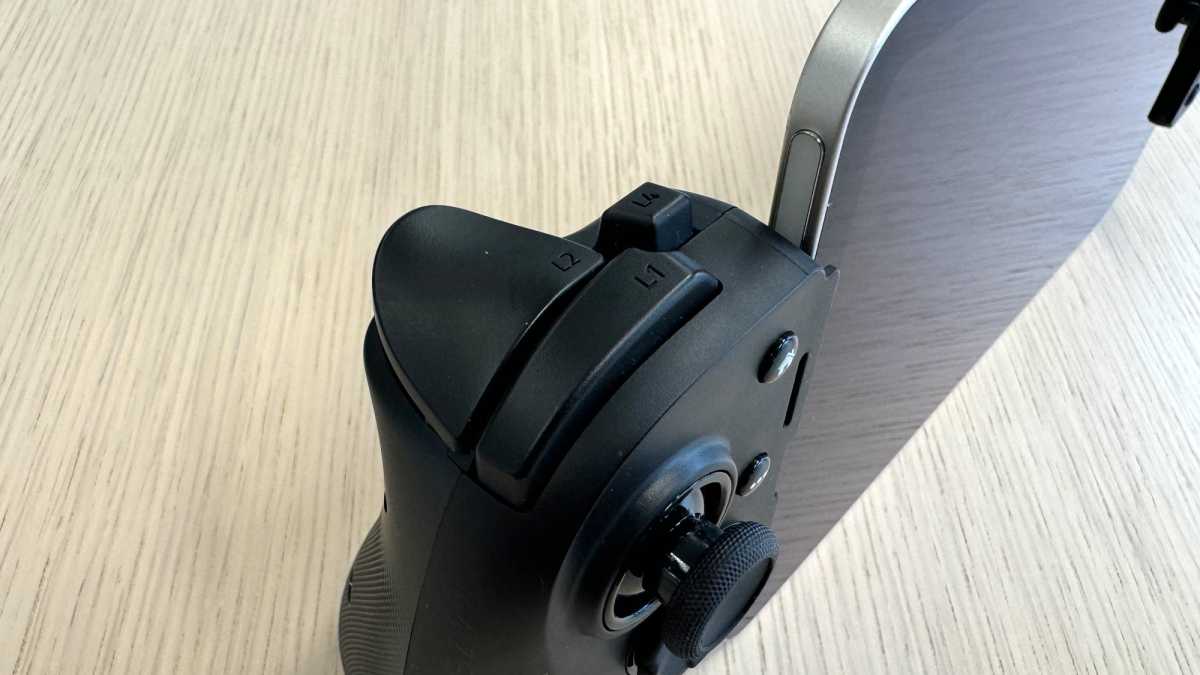
Eugen Wegmann
Razer Kishi Ultra: Hands-on
- Xbox layout
- Loud buttons
- Vibration only for Android
If you’ve used other Razer controllers, you will notice that Razer changed the button layout slightly, away from the compact, vertically symmetrical layout like the Switch to the slightly offset layout of an Xbox controller. In addition to the usual analog sticks, buttons, and triggers, the Kishi Ultra has a third shoulder button on each side, L4 and R4.
One of the problems with the Kishi V2 was that it was easy to get your thumb stuck on the right stick when using the main buttons (A/B/X/Y). The Kishi Ultra solves this problem by providing more space between the stick and the buttons due to its size, and by moving it slightly inwards rather than directly under the buttons.
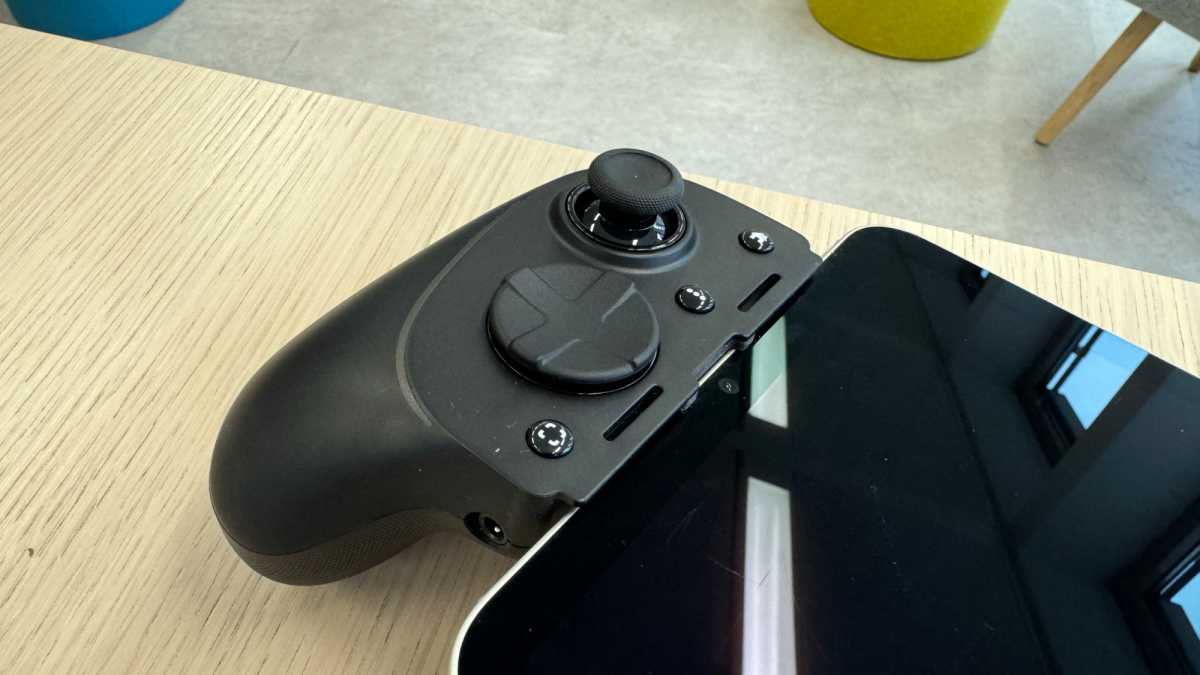
Eugen Wegmann
The Kishi Ultra has an additional home button on the left-hand side, which opens the Game Center on the iPhone and iPad. Razer has also redesigned the directional pad, moving away from a real cross to a large disc, like the one Microsoft has on the current Xbox Wireless Controller. Just like the D-pad on the Xbox controller, the individual switches are quite clicky, which is good for precision and feedback, but is really loud.
Overall, the volume of the buttons is a point where opinions will differ. The aforementioned directional pad, the main buttons (A/B/X/Y), the small shoulder buttons L4 and R4 and both sticks click like standard mouse buttons. On the one hand, they provide great feedback, but on the other hand, I wouldn’t hesitate to rip someone’s head off on the train if they were playing with the Kishi Ultra near me, because the noise level is incredibly annoying in the long run.
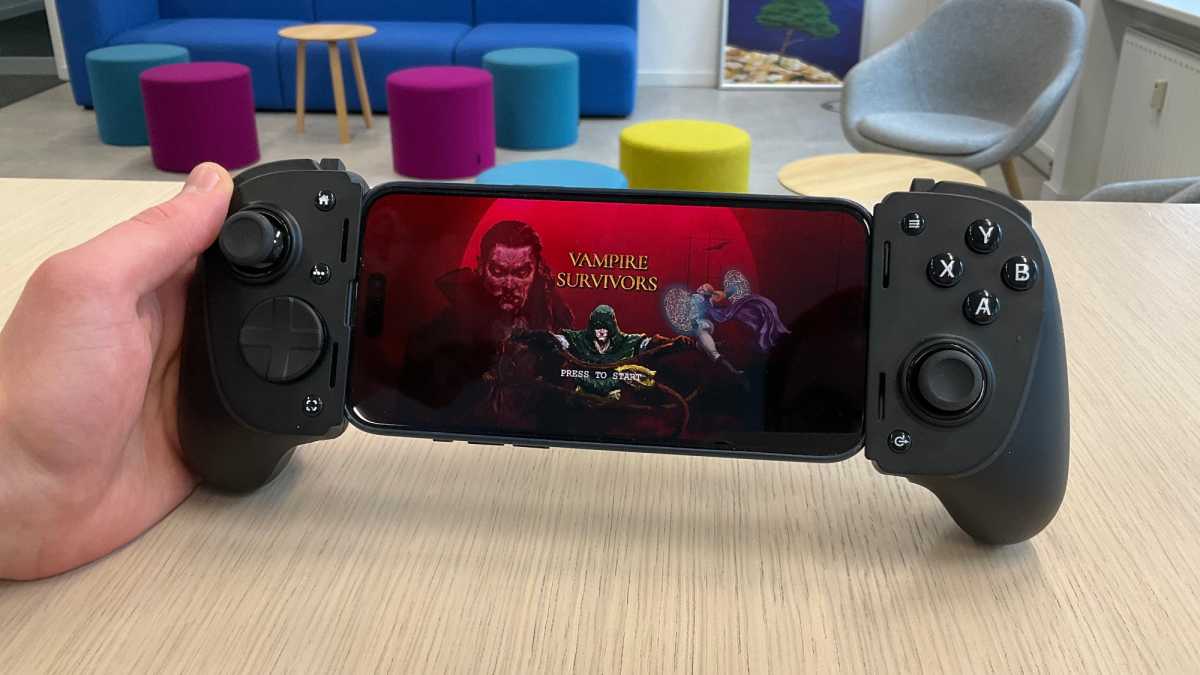
Eugen Wegmann
The Kishi Ultra fits incredibly well in the hand, although I can imagine that people with very small hands or fingers will reach their limits with it. The analog sticks are larger than on the Kishi V2 and are also concave so that the thumbs fit better. Although the pressure point of the analog sticks is objectively just as hard as the sticks on the Kishi V2, the shape and size of the Kishi Ultra make it much more comfortable.
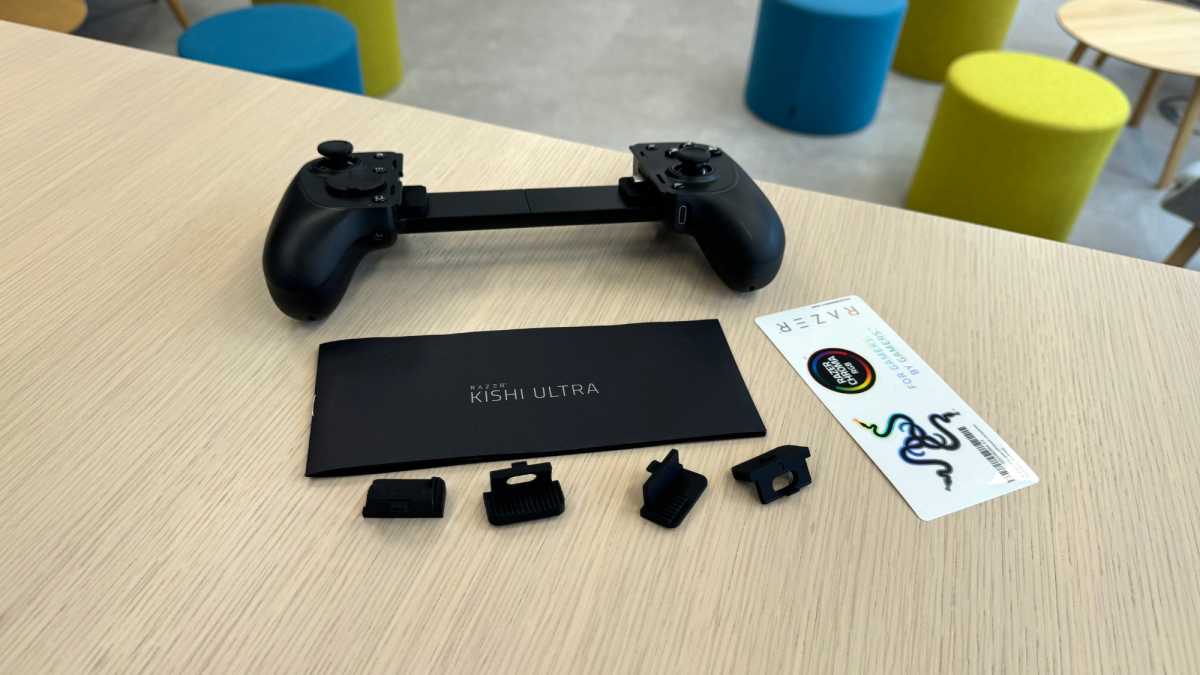
Eugen Wegmann
Razer Kishi Ultra: Compatibility
- USB-C only
- Not for iPhone 14 and older
- iPad mini only without case
Due to the USB-C connection, the Kishi Ultra is not compatible with the iPhone 14 and older, as these still have a Lightning connection. It works with USB-C iPhones and the USB-C iPad mini.
To ensure that devices not only fit into the Kishi Ultra but also sit properly in it, three pairs of rubber bumpers are included, one pair for the iPhone 15 series, one for the iPad mini, and one for Android smartphones. With the iPhone 15, the rubber bumpers are only needed if you use the phone without a case. With the original Apple cases (including the unloved Fine Woven case), the iPhone 15 sits firmly in the Kishi Ultra without the bumper.
The iPad mini only fits really well with bumpers and without a case. Without a case and without a bumper, the iPad wobbles; with bumpers and with the Smart Folio it doesn’t fit; and with a case and without a bumper, the left half constantly presses on the inner volume and power buttons. This makes using the iPad mini in the Kishi Ultra less than ideal because the iPad is either unprotected when being transported in a bag or you have to keep taking the case off and putting it back on.
In addition, the inner end of the iPad mini power button is somewhat covered by the Kishi Ultra and you usually have to fumble a bit for Touch ID or unlock your iPad before inserting it, or use a code. You can also only reach the inner volume button with your fingernail, so you have to rely on either your headphones or the bar in the Control Centre to adjust the volume.
In addition to Android and iOS/iPadOS, the Kishi Ultra also works with Windows 11 if you connect the controller with a cable, but macOS is not supported. Although macOS recognizes the Kishi Ultra when it is connected, it cannot be configured.
In general, Android smartphones and Windows PCs have an advantage over Apple devices, as they support the vibration motors integrated in the Kishi Ultra called “Razer Sensa HD Haptics” from Android 12 and Windows 11 onwards. Apart from the fact that the Kishi Ultra doesn’t even work with macOS, the iPad and iPhone unfortunately lack support.
On the software side, there are generally no problems with the Kishi Ultra. As long as a game supports controllers, the Kishi Ultra will also work. Fortunately, this also applies to various cloud streaming services such as Xbox Cloud Gaming (as part of Xbox Game Pass Ultimate), GeForce Now, and PlayStation Plus.
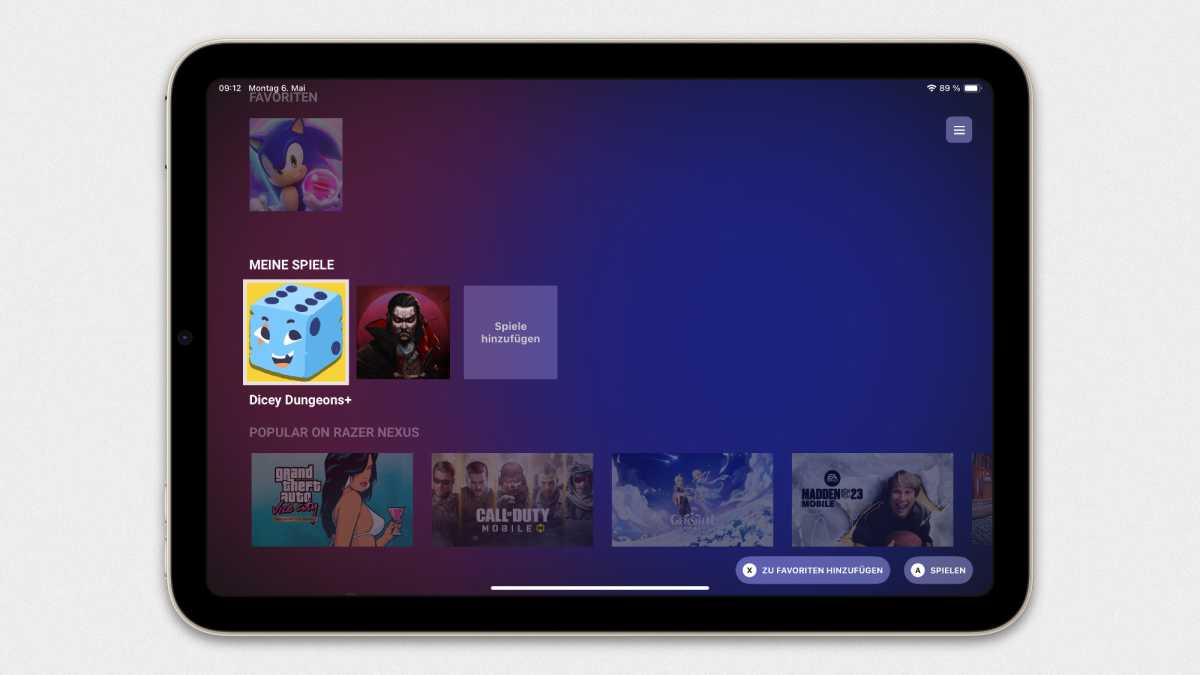
Eugen Wegmann
Razer Kishi Ultra: Nexus app
- Change the button assignment
- Quick access to games
- Streaming to YouTube and Facebook Live
Razer has tweaked some of the functionality of the Nexus app but the most important basic functions remain the same. You can still remap every single button on the Razer Kishi Ultra, which is particularly useful for the L4 and R4 buttons, and you can also set the dead zone of the two sticks. You can also configure Razer Chroma, i.e. the RGB lighting, in the app.
A nice touch is that you can now customize the launcher a little so that the start screen does not immediately bombard you with suggestions and offers. You can add installed games to the “My games” tab by opening a game and pressing the Nexus button under the right stick, and you can set favorites from this list, which are always displayed in the top line.

Eugen Wegmann
Unfortunately, there is no way to add Xbox Cloud Gaming and other cloud gaming services to “My Games,” which is a bit of a shame if you use them frequently. Instead, you always have to open the web app manually from the home screen.
Further down, games are then suggested by popularity and genre, all of which lead to the App Store in one way or another, as before. Last but not least, there is still the option to stream directly to YouTube or Facebook Live, but the link to Twitch is still missing.
Should you buy the Razer Kishi Ultra?
The Razer Kishi Ultra is by far the best controller if you don’t own any other gaming hardware and want to turn your iPad mini (6th gen) into a gaming device, whether for Apple Arcade games or cloud streaming.
This article originally appeared on Macwelt and was translated by Roman Loyola.

$149.99
This article originally appeared on our sister publication Macwelt and was translated and localized from German.
